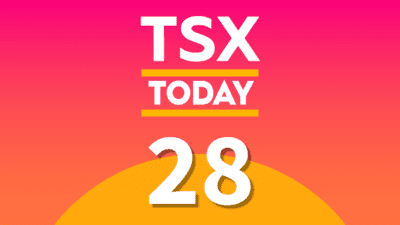Exchange-traded funds (ETFs) are more popular now than ever before. Low-volatility ETFs are darling investment inventions; they provide a broad market coverage by holding a basket of stocks that are chosen based on low beta (that is, based on a previous history of low price changes over time). The huge volatility in February and March has been a great way to stress test “smart-beta” ETFs.
Let’s consider this popular choice.
BMO Low Volatility Canadian Equity ETF (TSX:ZLB) has a little over 25 TSX stock holdings. Collectively, the beta for this ETF is meant to sit around 0.5, half that of the overall TSX.
The iShares S&P/TSX 60 ETF (TSX:XIU) serves as a good comparison, because XIU strives to reproduce the movement of the top 60 TSX stocks, and therefore will have more volatility.
How do these two ETFs compare as investments year to date?
Both are down. ZLB is down 3.8% at the time of writing. XIU is down almost twice as much: that is, 7.1% year to date. ZLB has preserved more capital during this rocky period. ZLB is deserving of a pat on the back, as it has achieved its primary objective: to change less drastically than the broader market.
If you dig deeper, there is another point to make about this low-volatility ETF. Based on my calculations, ZLB’s beta level has been creeping up and is now 57% higher than the three-year average beta.
Does beta matter?
In this case, yes! Here is why.
Beta is a relative number. ZLB’s beta is based on the price swing relative to the TSX market average. ZLB has a three-year beta around 0.5 (or, more precisely, a beta of 0.43 when considering the top 15 holdings), but it’s now closer to 0.67. This means that ZLB’s holdings have experienced rising volatility relative to the broader market. Ergo, the low-volatility concept is not exactly working! Can we chalk this up to a tracking error? Or a temporary aberration? Yes, quite possibly. Only time will tell.
Overall, beta from individual ZLB holdings is currently up. For example, Empire Company Limited (TSX:EMP.A) has an historic beta near 0.42, but over the last three months, beta is up to 0.61. The price volatility for Empire is perhaps welcomed, because this stock is up almost 3%, while many other ZLB holdings are down. I’m not recommending this stock, however, because Empire’s return on equity is not competitive enough for my liking.
Another ZLB holding is Telus Corporation (TSX:T)(NYSE:TU). Although it is down year to date, the recent price volatility is not unusual (don’t be fearful, Telus shareholders), because the current beta of 0.56 is in line with the historic average. This information, along with consistent expected forward earnings, makes high-yielding (4.46% dividend) Telus a solid pick in this tumultuous market.
Foolish perspective
ZLB is a good way to gain exposure to TSX stocks, as it cherry-picks stocks that have historically had lower volatility. ZLB fund managers can use the current choppy market to evaluate the holdings that they believe will continue to provide the low volatility that more cautious investors so desire.









